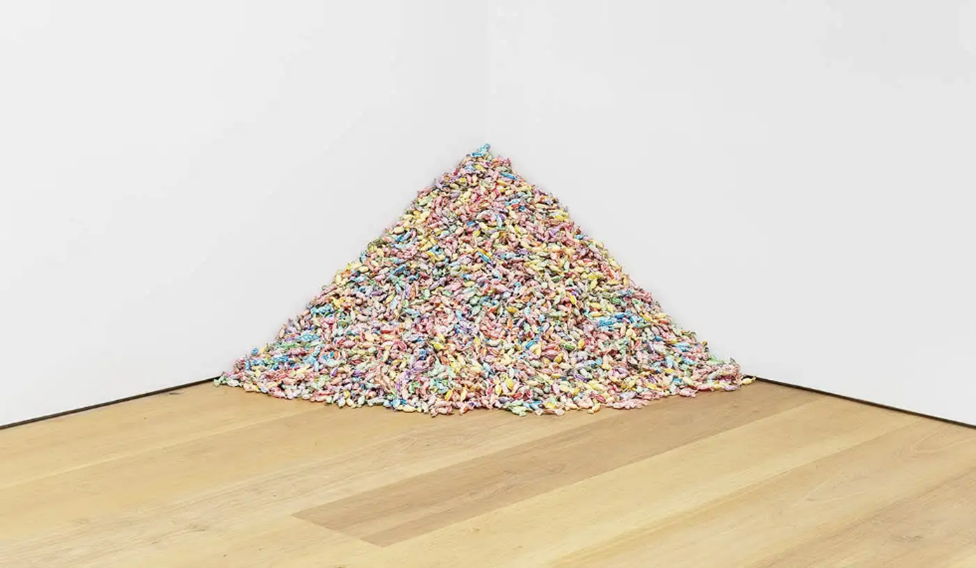Tsuktiben Jamir
Félix González-Torres lived a very short life; in 1996 aged just 38, he passed away leaving behind a trial of his unique and thoughtful works of art.
The Cuban-born American artist was loved and appreciated for his ability to subtly and strategically address the important, deep-seated themes and sentiments of his time. Gonzalez-Torres used a Minimalist, Post-Conceptual style in the late 1980s and early 1990s to communicate his views at an era of conservative, institutional scepticism towards art that dealt with homosexuality, the aids epidemic, and larger political themes. In fact, his works like “Untitled”, 1991 and “Untitled”, (Perfect Lovers), 1991 poignantly address the artists’ partner’s passing due to issues associated to HIV/AIDS.

Courtesy: The Collector
On the 25th February of this year, art lovers flocked at David Zwirner Gallery to bid the Felix Gonzalez-Torres exhibition farewell. Art critic Jerry Saltz was among the attendees who specifically wanted to bid his goodbye to “Untitled” (Public Opinion), one of 20 installation arts done by Felix, that feature sweets which the guests are at liberty to take and eat.
Gonzalez-Torres’ installation art often has an interactive or relational component. “Untitled” (Ross), 1991, was a pile of candy that weighed the same as his partner’s body who had passed away that year. The audience could pick up the candies and take them; he wanted his art to be immersive and participatory.

Courtesy: The Collector
On the 25th, Jerry witnessed such a beautiful scene of the essence of freedom in art. The corner of “Untitled” (Public Opinion), one of Torres’ signature candy spills, was abruptly split by two young individuals, who then relocated it, still in the shape of a triangle, about a foot away from the work.
In a jiffy, the other attendees gathered around the piece and joined in on the fun. They bent down on their knees and hands and proceeded to play around with the black candies; Jerry fondly recounts how they carved out canals, lakes, and hearts from it; some kids even scribbled “L A T I N A M E R I C A” with the black licorice candies. The candy was utilised by another group to promote homosexual rights. Two women were recreating the Mona Lisa using their iPhones as references on one side of the room.

Courtesy: Vulture
Jerry ends his recount by saying, “I witnessed the apotheosis of art as a verb, as something that did something to people, and, now, that people did something to.” This holds true for Gonzalez who gave the freedom through his art for people to immerse in the pieces. He wanted to give up control over how his works were shown and perceived, which is something that many artists find difficult to do. The social interaction, which was frequently convivial, that took place in these settings served as both the subject and the setting for the work of art.
In the end, his art pieces tell stories of various aspects of his lives like his love life as well as encountering death in losing a loved one; he lived his art and allowed people to experience it as well.





